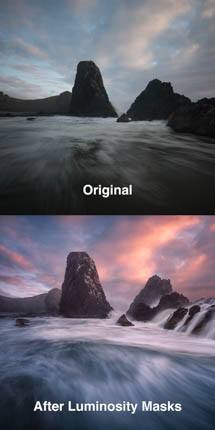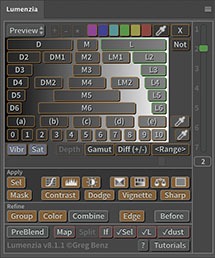Photoshop is the #1 professional image editing program in the world for a reason, it’s incredibly powerful. But that power has a downside, it can also be maddeningly complex. It has over 25 years of features designed to meet the needs of professionals, hobbyists, photographers, web designers, graphic designers, videographers, and more. I’m an Adobe Certified Expert in Photoshop and I don’t even know what many of the options do! But Adobe gets it, and they’ve built some awesome tools to let you customize Photoshop for your needs. One of my favorites is the custom menu editor. This little known tool lets you color-code the menu items you use most and hide the items you never need. And even better, you can save your settings to import on other copies of Photoshop.
I went crazy on an 8-hour flight home from London and made a comprehensive custom menu specifically for photographers, and it’s available for free to all my subscribers (current subscribers will receive an email with a link within the next day). My system for organizing the menus is:
- The most important or frequently-used options are green.
- Other commonly-used options are yellow.
- Less important options get left in the default gray.
- Photoshop settings are blue.
- Items that are rarely or never used for photography are hidden (this includes old filters that don’t support modern high res / 16-bit images, redundant options more commonly accessed elsewhere, press printing options, 3D modeling, tools specific to graphic design, etc). This gets rid of a lot of clutter. In the image below, you can see that my “Layer” menu is roughly 1/3rd shorter than the full default menu. Even though these options are hidden, you can still easily reveal them just by clicking “show all menu items” at the bottom of the menu (I set them up so that the hidden items show in red when displayed.)
- Items which are discouraged but not hidden are shown in orange. This includes Image / Mode / RGB because Edit / Convert to Profile is a higher-quality way to convert to RGB (as it lets you choose the specific RGB color space to convert to, gives you control over rendering intent, etc).

To install my custom menu:
- Download the custom menu file (sign up for my free newsletter to get the download link, or check the bottom of the latest newsletter if you’re already a subscriber).
- Just double-click the MNU file (Greg Benz Photoshop Menus.mnu). For most users, this should be all you need to do.
- If you have multiple versions of Photoshop installed, right-click the MNU file to choose which version of Photoshop should open and install the menu.
- If you have any problems with the approach above, you can also take a slightly more complicated approach. Click Edit/Presets/Export/Import Presets. Then click “select import folder” at the bottom-left of the window to point to the folder where you put the MNU file. The file will appear in the list box on the left: just click on it, then click the > arrow to move it to the import box, and then click “import presets” on the bottom right. Once you’ve done this, you still need to activate the imported menu. Click Edit/Menus, then change the “set” dropdown to the custom menu.
- (Note that if you want to remove it, just change the “set” option back to the default or use the trashcan icon to delete it.)
If you prefer to create your own custom menu from scratch or to modify what I’ve done, just follow these steps:
- Click Edit / Menus to open the custom menu editor.
- Make sure “menu for” is set to application menus. (Set it to panel menus if you want to tweak the fly-out menus in the panels. I have also customized these in my custom menus. Unfortunately, you cannot customize the options you see when you right-click in a panel, just the options that show up when you click the three little bars at the top-right of the panel.)
- Click the triangle in front of File, Edit, Image, etc. This will show all of the menu items. Sub-menu items are indented.
- Click on the color options to change the color for each item.
- Click on the visibility (eyeball icon) to show or hide each item. (Be sure to set color before making an item invisible).
- When you are done, click save (first icon with a down arrow) or save as (second icon, by the trash can).
- If you want to switch from one custom menu setup to another, click the “set” dropdown.
- To delete a custom menu, select it under “set” and then click the trashcan icon.

If you wish to reset the menu to defaults (no colors or hidden items):
- Go to Edit / Menus
- Change the set dropdown to “Photoshop Defaults” and click OK

